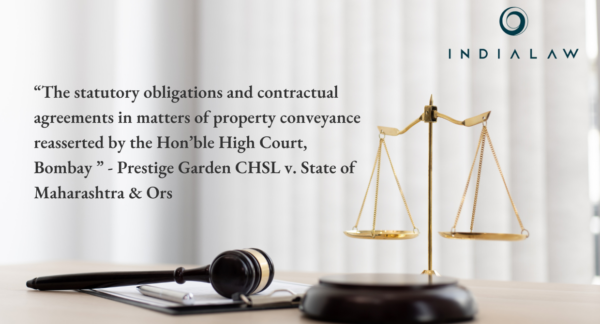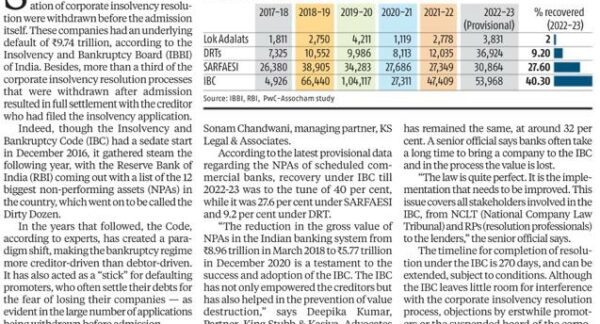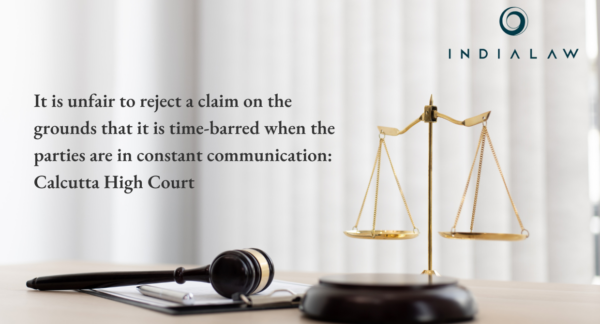Summarising the Insolvency and Bankruptcy Code, 2016


Insolvency and Bankruptcy: The Concepts elucidated
Insolvency is when an individual or organization is unable to meet its outstanding financial debt towards its lender as it become due. Insolvency can be resolved by way of changing the repayment plan of the loans or writing off a part thereof. If it cannot be resolved, then a legal action may lie against the insolvent and its assets will be sold to pay off the outstanding debts. Generally, an official assignee/liquidator appointed by the Government of India, realizes the assets and allocates it among the creditors of the insolvent.
Bankruptcy is a concept slightly different from insolvency, which is rather amicable. A bankruptcy is when a person voluntary declares himself as an insolvent and goes to the court. On declaring him as ‘bankrupt’, the court is responsible to liquidate the personal property of the insolvent and hand it out to its creditors. It provides a fresh lease of life to the insolvent.
Background
The statistics show that, in India total bad debts amount to 11% of the total lending and it is seen to be increasing. In India compared to any other progressive economy, the time taken for resolving insolvency is much more, making it appear low on the list of countries with ease of doing business and resolving insolvency. Corporate bad debts constitute 56% of the total bad debts of nationalised banks. These are thousands of pending litigations for recovery of money, squarely due overlapping jurisdictions of various laws governing insolvency resolution and courts. Hitherto, there were about 12 laws concerning insolvency. In the current setup, records show that it takes on an average 4 years to wind up a company in India. Clearly, India is lacking appropriate institutional and legal machinery to deal with debt defaults as per global standards. The recovery proceedings by creditors, either through the Contracts Act or through special laws such as the Recovery of Debts Due to Banks and Financial Institutions Act, 1993 or the Securitisation and Reconstruction of Financial Assets and Enforcement of Security Interest Act, 2002, has not had desired outcomes. Similarly, action through the Sick Industrial Companies (Special Provisions) Act, 1985 (SICA) and the winding up provisions of the Companies Act, 1956 have neither been able to aid effective recovery of outstanding debt, nor restructuring of debts. The Presidency Towns Insolvency Act, 1909 and the Provincial Insolvency Act, 1920, dealing with individual insolvency, are almost a century old.
Considering the abovementioned reasons, the Government undertook a plan to replace existing insolvency laws with one consolidated and comprehensive law that will facilitate easy and time-bound closure of business. On 11th May, 2016 the Rajya Sabha passed the major Economic Reform Bill moved by the Government i.e. ‘Insolvency and Bankruptcy Code, 2016’. The Lok Sabha had already passed the Bill on 5th May, 2016. The Code received the President’s assent on 28th May, 2016. However, the date when the Code will come into effect has not been notified.
The Code
The Insolvency and Bankruptcy Code, 2016 aims to consolidate and amend the laws relating to insolvency resolution of companies and limited liability entities, partnerships and individuals, which are contained in various enactments, into a single legislation.The main focus of this legislation is at providing resurrection and resolution in a time bound manner for maximization of value of debtor’s assets. The Code has put forth an overarching framework to aid sick companies to either wind up their business or engineer a revival plan, and for investors to exit. Notably, the Code has also empowered the operational creditors (workmen, suppliers etc.) to initiate the insolvency resolution process if default occurs.
Another important feature of the Code is that it does not make any distinction between the rights of international and domestic creditors or between classes of financial institutions. The Code has sought to balance the interest of all the stakeholders including alteration in the order of priority of payment of Government dues. The legislators have sought to bring in a law analogous to international standards which is guided by the broad philosophy that insolvency resolution must be commercially and professionally driven (rather than court driven). As such, the role of adjudicating authorities is limited to ensuring due process rather than adjudicating on the merits of the insolvency resolution
The Code repeals the Presidency Towns Insolvency Act, 1909, and Provincial Insolvency Act, 1920, as well as amends 11 legislations, including:
- Indian Partnership Act, 1932
- The Companies Act, 2013
- Securitisation and Reconstruction of Financial Assets and Enforcement of Security Interest Act, 2002;
- Limited Liability Partnership Act, 2008,
- Sick Industrial Companies (Special Provisions) Repeal Act, 2003
To avoid any further litigation in insolvency proceedings, the Code will have an overriding effect over all other laws.It is specifically provided that civil courts or authority not to have jurisdiction and also cannot grant any injunction. The Code as a new law, replacing over a dozen laws, when implemented post the infrastructure being put in place, will prove to be the most important step in evolving theregimen of recovery of bad debts. Moreover, there will be a definite surge in economic growth in view of the rigid timeframe prescribed in the Code for resolution of insolvency and liquidation proceedings.The insolvency resolution process is described herein below:
Insolvency Resolution Process
The Code makes a significant departure from the existing resolution regimen by shifting the responsibility on the creditor to initiate the insolvency resolution process against the corporate debtor.Under the existing legal framework, the primary onus to initiate a resolution process lies with the debtor, and creditor may pursue separate actions for recovery, security enforcement and debt restructuring.
- Insolvency Resolution and Liquidation Process for Corporates
If the default is above Rs.1 Lakh (may be increased up to Rs.1 Cr by the Government, by notification), the creditor may initiate insolvency resolution process. The Code proposes two independent stages:
Insolvency Resolution Process – during which financial creditors assess whether the debtor’s business is viable to continue and the options for its rescue and resurrection; and
Liquidation– if the insolvency resolution process fails or financial creditors decide to wind down and distribute the assets of the debtor.
A. The Insolvency Resolution Process
- A financial creditor (himself or jointly with other financial creditors), an operational creditor or the corporate debtor (through Corporate applicant i.e. corporate debtor itself; or an authorised member, partner of corporate debtor; or a person who has control and supervision over the financial affairs of the corporate debtor) may initiate corporate insolvency resolution process in case a default is committed by corporate debtor. An application can be made before the National Company Law Tribunal (NCLT) for initiating the resolution process. Operational creditor needs to give demand notice of 10 days to corporate debtor before approaching the NCLT. If corporate debtor fails to repay dues to operational creditor or fails to show any existing dispute or arbitration, then the operational creditor can approach NCLT.
- Corporate insolvency process shall be completed within 180 days of admission of application by NCLT. Upon admission of application by NCLT, Creditors’ claims will be frozen for 180 days, during which time NCLT will hear proposals for revival and decide on the future course of action. And thereupon, no coercive proceedings can be launched against the corporate debtor in any other forum or under any other law, until approval of resolution plan or until initiation of liquidation process.
- NCLT appoints an interim Insolvency Professional (IP) upon confirmation by the Insolvency and Bankruptcy Board (hereinafter, “the Board”) within 14 days of acceptance of application. Interim IP holds office for 30 days only. Interim IP takes control of the debtor’s assets and company’s operations, collect financial information of the debtor from information utilities.
- NCLT causes public announcement to be made of the initiation of corporate insolvency process and calls for submission of claims by any other creditors.
- After receiving claims pursuant to public announcement, interim IP constitutes the creditors’ committee. All financial creditors shall be part of creditors’ committee and if any financial creditor is related party of corporate debtor, then such financial creditor will not have any right of representation, participation or voting. Operational creditors should be part of Creditors’ Committee (without voting right) if their aggregate dues are not less than 10% of the debt.
- Creditors’ committee shall meet first within seven days of its constitution and decide by 75% of votes either to replace or confirm interim IP as Resolution Professional. Thereupon, Resolution Professional is appointed by the NCLT upon confirmation by the Board. The creditors’ committee,with a majority of 75% votes, can change Resolution Professional any time.
- The creditors’ committee has to then take decisions regarding insolvency resolution by a 75% majority voting.
- If three-fourths of the financial creditors consider the case complex and require extension of time beyond 180 days, the NCLT can grant a one-time extension of up to 90 days.
- Resolution Professional to conduct entire corporate insolvency resolution process and manage the corporate debtor during the period.
- Resolution Professional shall prepare information memorandum for the purpose of enabling resolution applicant to prepare resolution plan.A resolution applicant means any person who submitsresolution plan to the resolution professional. And upon receipt of resolution plans, Resolution Professional shall place it before the creditors’ committee for its approval.
- Once a resolution is passed, the creditors’ committee has to decide on the restructuring process that could either be a revised repayment plan for the company, or liquidation of the assets of the company. If no decision is made during the resolution process, the debtor’s assets will be liquidated to repay the debt.
- The resolution plan will be sent to NCLT for final approval, and implemented once approved.
B. Liquidation
- The commencement of liquidation process takes place on account of:
- failure to submit the resolution plan to the NCLT within the prescribed period, or
- rejection of resolution plan for non-compliance with the requirements of the Code,
- or decision of creditors’ committee based on vote of majority, or
- contravention of resolution plan by the debtor.
- During liquidation, no suit or other proceedings shall be instituted by or against the corporate debtor; except through the liquidator on behalf of corporate debtor with permission of the NCLT.
- The Resolution Professional shall act as liquidator unless replaced.
- The liquidator shall form an estate of all assets of corporate debtor called the liquidation estate.
- Liquidator shall receive, verify and admit or reject, as the case may be, the claims of creditors within the prescribed time. Creditor may appeal to the adjudicator within 14 days.
- A secured creditor may either relinquish its security interest to the liquidation estate and receive on first priority,the proceeds of the sale by the liquidator or realise its security interest by enforcing, realising, settling, compromising or dealing with the secured asset in accordance with such law as applicable to the secured interest. Any surplus amount so realised shall be tendered to the liquidator. In case of any shortfall in recovery, the secured creditors will be paid by the liquidator out of the assets of the corporate debtor. However, his claim will be junior to the unsecured creditors to the extent of the shortfall.
- Assets will be distributed by the liquidator in the manner of priorities of debts laid in the Code (see below). Individual claimants or those claiming to have any special rights on assets of the debtor will form part of the liquidation process.
- All sums due to any workman or employee from the provident fund, the pension fund and the gratuity fund will be considered as priority dues and is not to be included in the liquidation estate and estate of bankrupt.
- Upon the assets of corporate debtor completely liquidated and the liquidator making an application, the NCLT shall pass an order dissolving the corporate debtor.
C. Fast Track Insolvency Resolution Process
The Code has provided for a fast track insolvency resolution process in respect of corporate debtors, qualification to be notified by the Government. The process shall be completed in 90 days (extendable by maximum 45 days). Provisions of insolvency process apply to fast track insolvency. This will be an enabler for start-ups and small and medium enterprises to complete the resolution process quickly and move on.
D. Voluntary Liquidation of Corporate Person
The Code provides for voluntary liquidation proceedings by corporate person who intends to liquidate itself and has not committed any default and can pay off its debts fully from proceeds of liquidation of its assets. The law requires a declaration to that effect from majority of directors of the company also stating that the company is not being liquidated to defraud any person. A resolution passed to this effect shall be approved by creditors representing two-thirds value of the company’s debts.Voluntary liquidation commences when such resolution is passed by the creditors as above. Provisions of liquidation process apply to voluntary liquidation.Once the debtor is completely wound up and assets liquidated, the NCLT passes an order for its dissolution.
II. Insolvency Resolution & Bankruptcy for Individuals & Partnership Firms
For insolvency resolution of individuals and partnerships, there is no specific mandatory period within which the resolution decision has to be taken. Reason attributable is that individual businesses are varied and vastly different, with no standardised information about their activities. Moreover, a corporate person can be liquidated but an individual cannot. He has to be declared bankrupt.
If the default is above Rs.1000 (may be increased up to Rs.1 lakh by the Government, by notification), the Code applies to such individuals and partnerships. The Code envisages following distinct processes in case of insolvencies:
Automatic fresh start process– wherein, the Code allows discharge of qualifying debts thereby facilitating the debtor to start afresh.
Insolvency resolution process– during which the creditors assess whether the debtor’s business is viable to continue and the options for its rescue and resurrection
Bankruptcy–it is similar to liquidation proceeding. When insolvency process fails, creditors may apply to distribute debtor’s estate to repay the debts.
A. Fresh Start Process
Under the automatic fresh start process, eligible debtors (on basis of minimum threshold specified of gross income, value of assets, qualifying debt etc.) can apply to the Debt Recovery Tribunal (DRT) for discharge from certain debts not exceeding a specified threshold, allowing them to start afresh. The fresh start process is only available to individual insolvency (under Part III, Chapter II, of the Code)and not available for corporate persons. A resolution professional appointed by the DRT examines the application, receives claims from creditors, accepts or rejects the applicationand submits a report with reasons to the DRT. On the basis of the said report, the DRT accepts or rejects the application.
B. Insolvency Resolution Process
The insolvency resolution process consists of preparation of a repayment plan by the debtor, for approval of creditors. If approved, the DRT passes an order binding the debtor and creditors to the repayment plan. If the plan is rejected or fails, the debtor or creditors may apply for a bankruptcy order.
- A debtor (majority of partners if applying for a firm), creditor (himself or jointly with other creditors), individually or through resolution professional may apply to DRT.
- DRT shall appoint resolution professional upon confirmation received from theBoard. Resolution professional may be replaced at any time,with a majority voting of the creditors,through an application to DRT. Board shall confirm and the DRT shall appoint the creditors’ nominated person or Board’s recommended person as resolution professional.
- The resolution professional shall examine insolvency application and submit his report to DRT with his recommendation to admit or reject it.
- DRT shall within 14 days admit or reject the application. Upon admission, DRT may on the request of resolution professional, issue directions for conducting negotiations between debtor and creditors for arriving at a repayment plan.
- DRT shall issue public notice inviting claims from all creditors within 21 days of such notice. Creditors shall register claims with resolution professional. Resolution professional shall prepare a list of creditors. The resolution professional shall determine the voting share to be assigned to each creditor.
- The debtor shall prepare a repayment plan containing a proposal to the creditors for restructuring his debts. The resolution professional shall submit the repayment plan along with his report on the resolution plan to DRT within 21 days of last day of submission of claims.
- The resolution professional shall summon a meeting of creditors to approve, modify or reject the repayment plan by a majority of more than 75% votes. Debtor’s consent to every modification shall be taken.
- Secured creditor is entitled to participate and vote in creditor’s meeting if heforfeits right to enforce the security. If the secured creditor does not forfeit his right to enforce security, then his right to vote is only in respect of the unsecured part of his debt. Secured and unsecured parts of the debt are treated as separate debts.
- The resolution professional prepares a report of the meeting and submits to DRT. DRT may approve or reject the repayment plan on the basis of the report. Approved repayment plan shall be binding on creditors and debtor. If the DRT rejects the repayment plan, then bankruptcy proceeding can be initiated.
C. Bankruptcy
The process is similar to liquidation of corporate person.
- When application for insolvencyis rejected by the DRT or the repayment plan is not submitted in time or the repayment plan fails or does not fulfil requirements of the Code, or the repayment plan is contravened, the creditor (individually or jointly with other creditors)or the debtor himself may apply to DRT for bankruptcy of the debtor. The application cannot be withdrawn except with the leave of the tribunal.The DRT will pass an order, thereby indicating commencement of bankruptcy proceeding (date of such order is the bankruptcy commencement date).
- A secured part of the creditor’s debt may at his discretion be made part of bankruptcy trust. He may choose to make an application for bankruptcy only in terms of unsecured part of his debt. A bankruptcy order does not affect his right to realise his security interest. However, he may do so only within 30 days from bankruptcy commencement date.
- A bankruptcy trustee is appointed by the DRT on the basis of Board’s confirmation of nominated person by applicant or Board’s recommendation of another person.A bankruptcy trustee may be replaced by 75% voting of committee of creditors or he may resign himself.
- Estate of bankrupt vests in the bankruptcy trustee and he shall divide it among creditors.
- The DRT shall send notice to creditors of commencement of bankruptcy proceeding and shall issue a public notice calling for claims from creditors.
- The claims of creditors shall be registered with the bankruptcy trustee. The trustee shall prepare a list of creditors and summon a meeting of creditors. A committee of creditors shall be formed in the meeting. Creditors are entitled to a vote in accordance with the voting share assigned to them by the resolution professional.
- Creditors shall submit proof of debt within 14 days of preparing list of creditors. The creditor shall give full particulars (along with proof) of claim and/or security interest. If a creditor does not file a proof of security within 30 daysof notice to that effect sent by the trustee, then with DRT’s leave the bankruptcy trustee may sell or dispose of any property that was subject to a security charge, free of that security charge.
- Bankruptcy trustee shall conduct the administration and distribution of bankrupt’s estate.
- Once the administration is complete or on expiry of one year from date of bankruptcy commencement, the bankrupt may be discharged by an order of the DRT.
- The DRT may recall its bankruptcy order or modify it on an application from creditor/s or suo moto, whether or not the bankrupt is discharged,if satisfied that there exists an error apparent on face of order or bankruptcy debts are paid for or secured to the authority’s satisfaction.
- The Code provides for a list of priority of debts with regard to distribution of proceeds following bankruptcy of the partnership firm or individual.
- Administration and distribution of estate:The Bankruptcy trustee shall realise the estate and distribute the proceeds or the assets itself to the creditors in instalments or in totality as per the list of priority of debts and availability of funds.
- A creditor who has not proved his debt before declaration of instalment/dividendis not entitled to intervene by reason that he has not participated in the distribution of dividend before his debt was proved. But when he proves it he shall be paid on priority, amount to the extent of his share of dividend that is paid to other creditors.
- Bankruptcy proceedings shall continue even if the bankrupt dies. Claims of legal representatives shall be entertained.
III. Order of priority of payment of debts
The Code provides for priority with regard to distribution of proceeds following liquidation of the company or bankruptcy of individual or partnership as below:
| i. Insolvency resolution cost and liquidation cost |
| ii. workmen’s dues (for 24 months before commencement) and debts to secured creditor (who have relinquished their security interest) |
| iii. Wages and unpaid dues to employees (other than workmen) (for 12 months before commencement) |
| iv. Financial debts to unsecured creditors and workmen’s dues for earlier period |
| v. Crown debts and debts to secured creditor following enforcement of security interest |
| vi. Remaining debts |
| vii. Preference shareholders |
| viii. Equity Shareholders or partners |
Any surplus remaining after payment of debts shall be applied in payment of interest accrued since commencement date.
IV. Moratorium
- One of the most significant features of the Code is the grant of moratorium during which creditor action will be stayed. This is not automatic and has to be granted by the Adjudicating Authorityat the time ofadmission of the corporate insolvency application.Moratorium shall continue till completion of corporate insolvency resolution process.
- An automatic interim moratorium operates when an application for fresh start process by debtor, or an application for insolvency resolution of partnership firm or individual, or application for bankruptcy is made. Interim moratorium ceases to have effect upon admission of such application by the adjudicating authority.During the period of filing of application for insolvency or liquidation/bankruptcy, an interim-moratorium period shall automatically commence and shall be effective till insolvency or liquidation/bankruptcycommencement date, as the case may be.
- The Adjudicating Authority shall declare moratorium for prohibiting the following:
- any legal action against debtor by way of the institution of suits, continuation of pending suits or proceedings including execution of judgement, decree or order in any court of law, tribunal, arbitration panel or other authority;
- transferring, encumbering, alienating or disposing debtor’s assets;
- any action to enforce or deal with security interest created by the debtor in respect of its property including under SARFAESI Act, 2002;
- the recovery by an owner or lessor of any property in the possession of the debtor.
4. The supply of essential goods or services to the debtor shall not be interrupted during moratorium period.
5. The order of moratorium shall be effective from the date of such order till thecompletion of the insolvency resolution process (i.e. maximum 180+90 days). However, if during the insolvency resolution processperiod, the Adjudicating Authority approves the resolution plan or passes an order for liquidation/bankruptcy, then the moratorium period shall cease.
6. The period of moratorium shall be excluded for purpose of computing the period of limitation specified for any suit orapplication by or against a debtor for which an order of moratorium has been made.
V. Adjudicating Authority under the Code
At present, the High Courts, the Company Law Board (CLB), the Board for Industrial and Financial Reconstruction (BIFR) and Debt Recovery Tribunal (DRT) are having overlapping jurisdiction in the matter of debt recovery and restructuring. This gives rise to systemic delays and complexities in the process. The code intends to overcome these challenges and aims to reduce the burden on the courts as all litigation will be filed under the Code as under:
Under Part II, Chapter VI of the Code, National Company Law Tribunal (NCLT) would be adjudicating authority for insolvency resolution and liquidation of Companies, Limited Liability Partnerships (LLPs), any entity with limited liability under any law and bankruptcy of personal guarantors thereof. An appeal can be preferred from orders of NCLT to National Company Law Appellate Tribunal (NCLAT) within 30 days (15 days’ extension if there is sufficient ground). Jurisdiction is territorial based on location of registered office of corporate person. Orders of NCLAT are appealable on a question of law to the Supreme Court within 45 days.
Vide its notification dated June 01, 2016, the Central Government has constituted 11 (eleven) Benches of the NCLT in exercise of its powers under sub-section (1) of section 419 of the new Companies Act, 2013. Of the said 11 benches, two shall be situated in New Delhi, and one each at Ahmedabad, Allahabad, Bengaluru, Chandigarh, Chennai, Guwahati, Hyderabad, Kolkata and Mumbai.
Under Part III, Chapter VI of the Code, Debt Recovery Tribunal (DRT) would be the adjudicating authority for insolvency resolution and bankruptcy of individuals, unlimited partnerships and partner/s thereof. Jurisdiction would be based on place of residence or works for gain or carries on business. Appeal can be made to Debt Recovery Appellate Tribunal (DRAT) within 30 days (15 days’ extension if there is sufficient ground). Further appeal from DRAT would be within 45 days before the Supreme Court only on question of law. It is specifically provided that Civil courts or authority not to have jurisdiction and also cannot grant any injunction.
In keeping with the broad philosophy that insolvency resolution must be commercially and professionally driven (rather than court driven), the role of adjudicating authorities is limited to ensuring due process rather than adjudicating on the merits of the insolvency resolution.
VI. New Institutions Proposed under the Code
The Code has provideda host of new institutions to carry out the provisions of the Code, which are as below:
- Insolvency Professionals: will conduct the insolvency resolution process, take over the management of a company, assist creditors in the collection of relevant information, and manage the liquidation process. The Code bestows such powers and duties upon the insolvency professional as required to efficiently drive the insolvency and liquidation process.
- Insolvency Professional Agency:will accept registration, examine and certify the insolvency professionals. Such agencies are to be registered with and certified by the Insolvency and Bankruptcy Board of India.
- Insolvency and Bankruptcy Board of India: This body will have regulatory over-sight over the Insolvency Professional, Insolvency Professional Agencies and Information Utilities. Under the Board’s supervision, these agencies will develop professional standards, codes of ethics and exercise a disciplinary role over errant members leading to the development of a competitive industry for insolvency professionals. The Board is responsible for making guidelines and regulation on matters of insolvency and bankruptcy.The Board shall consist of a Chairperson, three members from the Central Government not below the rank of Joint Secretary or equivalent – one each to represent the Ministry ofFinance, the Ministry of Corporate Affairs and Ministry of Law, ex-officio; one member to be nominated by the Reserve Bank of India, ex officio; five other members to be nominated by the Central Government. The Chairperson and the other members shall be persons of ability, integrity and standing, who have shown capacity in dealing with problems relating to insolvency orbankruptcy and have special knowledge and experience in the field of law, finance, economics, accountancy or administration.
- Insolvency Information Utilities: The Code provides for information utilities which would collect, collate, authenticate and disseminate financial information from listed companies and financial and operational creditors of companies. An individual insolvency database is also proposed to be set up with the goal of providing information on insolvency status of individuals.
VII. Distinctive Features and Evaluation of the Code
The most important achievement of the Code is that it seeks to separate commercial aspects of the insolvency proceedings from judicial aspects. While Insolvency Professionals will deal with commercial aspects such as management of the affairs of the corporate debtor, facilitating formation of committee of creditors, organising their meetings, examination of the resolution plan, etc., judicial issues will be handled by proposed Adjudicating Authorities (National Company Law Tribunal / Debt Recovery Tribunal). This would reduce the burden on judiciary and would eliminate delays.
The essential idea of the new Code is that when a corporate person commits default on its debt, control of the corporate person should shift from the shareholders/promoters to a committee of creditors, who have 180 days (plus 90 days in deserving cases) to evaluate proposals from various players about reviving the company or taking it into liquidation. When decisions are taken in a time-bound manner, there is a greater chance that the corporate entity can be saved as a going concern, and the productive resources of the economy (labour and capital) can be put to the best use. This is in complete departure from SICA regimen where there were delays leading to fall in value of the entity in the market.
Another important feature of the Code is the strict timelines for resolution of insolvency and liquidation proceedings. One key objective of the Code is to have a system which curtails tactics by the debtors to delay liquidation/enforcement/restructuring by finding loop holes in the system. This is often done by restricting dissemination of correct information to the lenders and filing frivolous appeals against orders passed in favour of the lenders. While the Code addresses the underlying causes for such delaying tactics and seeks to put full-bodied information systems in place, it is yet to be seen if this is sufficient in practice to prevent debtors from arm-twisting the lenders who may not see sufficient recovery from liquidation process.Nonetheless, there are high expectations from the implementation of the Code. It is expected that there would be time-bound settlement of insolvency, faster turnaround of businesses and creation of a database of serial defaulters. India’s high bad debt problem will be solved to great extent. The Code will make it easier for financial institutions and banks to deal with non-performing assets (NPAs) and have a faster and non-invasive recovery process.
The Code also addresses the important issue relating to insolvency across borders by providing the enabling mechanism on the subject. Given that many corporate transactions and businesses involve an international element, the Code attempts to address this by putting all lenders (domestic or foreign)on the same footing and bringing property of debtor whether located in or outside India under the purview of the Code. The Code only speaks about financial creditor and an operational creditor. That means,a foreign creditor toocan apply for debtor’s insolvency under the Code.Assets of the debtor located outside India (in countries with whom India has reciprocal arrangements) can be included for the purpose of the insolvency resolution process and/or liquidation. The Code provides that the Central Government can enter into agreements with any other country for enforcing provisions of the Code and notify applicability of the same from time to time.
The Code also provides a collective mechanism for creditors to resolve the distressed position of corporate debtor. In any restructuring process, different creditors have varying interests which often leads to conflicts.Depending upon the nature of their debt (operational or financial) or the security of the debt (secured or unsecured), each creditor may have a different strategy of recovery. Likewise, foreign creditors may have a different approach from domestic creditors. The new inter-creditor dynamics introduced by the Code will realign the existing practices of various creditor groups. Earlier, the law put the onus on the debtor to apply for reorganisation and the creditors could only pursue legal action for recovery of money or enforcement of security and debt restructuring.
The Code has made a provision for including operational creditors (workmen, employees, suppliers) in the Committee of Creditorsif their dues are not less than 10% of the debt. They will not be given any voting rights but have a chance to present their views through a representative. This will help the resolution professional to stick to the timelines.
Further, until the Insolvency and Bankruptcy Board or a financial sector regulator is designated, the powers and functions of the Board or such financial regulator shall be exercised by the Central Government. A lot rests on the nuts and bolts of rules and regulations which are expected to be notified under the Code.
The Code amends the Sick Industrial Companies (Special Provision) Repeal Act, 2003. Thereby, any proceeding pending before the BIFR or the AAIFR under the SICA, 1985, immediately before the commencement of this law shall stand abated. Such company in respect of which such proceeding stands abated, may make a reference to Adjudicating Authority within 180 days from the commencement of this law.
The winding up of company under the Companies Act, 2013 has been amended by the Code to exclude creditor from winding up a debtor company. Once the Code comes into effect, the creditor will have to compulsorily obtain recourse to the Code to recover debts from a company. Thus, the Code has curtailed overlapping insolvency and liquidation provisions under multiple laws.
Conclusion
The Bill has become a statute upon receiving Presidential assent. However, the Code provides that the provisions of the Code will come into effect on the date appointed by the Central Government and notified in this behalf. The news is that the Government has undertaken an exercise to fill up vacancies in the National Company Law Tribunal on priority basis. Once the tribunal is operational and the Insolvency and Bankruptcy Board is established and functional, there will be a surge in the credit market. The passing of this Code and implementation of the same will give a big boost to ease of doing business in India. However, in the absence sufficient infrastructure and insolvency practitioners, execution may take longer than anticipated.
As outlined earlier in this article, the Code not only repeals 2 statutes, but also amends 11 other statutes such as Companies Act, SICA, SARFAESI etc. for effectuating the provisions relating to insolvency and bankruptcy of all legal and natural persons under the Code. However, the interplay of provisions of the Code, the amended statutes and several other statutes (such as Negotiable Instruments Act, 1881) will be an important factor in determination of insolvency proceedings. It is of utmost importance that provisions of key recovery laws be synchronised in order to ensure that there are no discrepancies or overlap of jurisdictions so that multiplicity of remedies is not taken recourse to.
Perhaps, the Code has brought far too many changes at the same time, which has caused apprehensions. In India, where any change in the legal system are hard to enforce, this Code has proposed a massive overhaul of laws, procedures and infrastructure, whichis bound to be subjected to hangovers of previous regimen, resistance to rapid enforcement from the fraternity and ultimately dilution in its effectiveness. But, all this on one side, there is no doubt that once the Code is fully implemented, it is going to be one of the best initiatives by the legislatures and a boon to the economy in the broader sense.
Disclaimer
The content of this article is intended to provide a general guide to the subject matter. Specialist advice should be sought about specific circumstances and queries.




